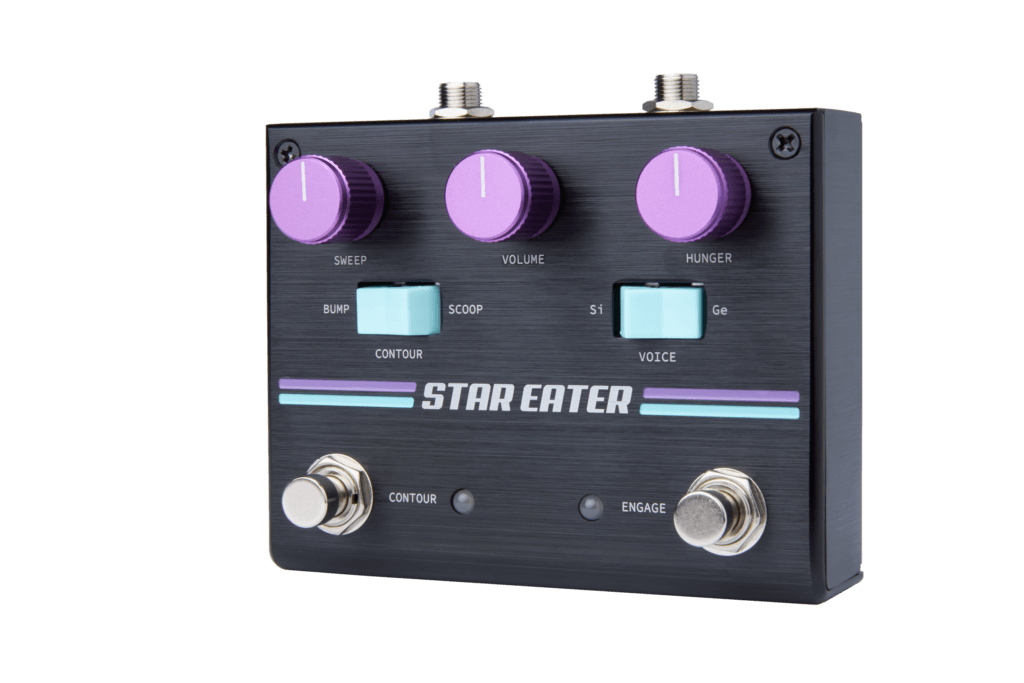Not all fuzzes are created equal; the various vintages and versions, the tweaks, the re-issues, the everything-in-one model configurations. It’s overwhelming to sort through. Pigtronix has unleashed their new Star Eater, and its options are practical for what a fuzz is, without confusion.
The Captain Picard-approved “engage” switch starts things off, with a volume controlling the output level, and the hunger control covering the level of the fuzz. The tweaking starts here, with the voicing switch allowing the user to choose between silicon or germanium diodes doing the work of clipping the signal for the fuzz’s character. Pigtronix states that the transistors are matched for the optimum sweet spot of fuzz. We can’t argue with that.
For additional tonal sculpting the contour side offers up either a mid-range bump or scoop with its rocker switch, and further adjustability of that choice via the sweep control. Fuzzes also behave strangely with various batteries, and to keep things consistent on the power end of things, it needs to be powered by a 9v power supply.
For the record, germanium fuzzes are usually very smooth, while the silicon versions are a bit more in-your-face and punchy. Starting off with the germanium side, that smoothness is certainly present, and very interactive with the hunger control. When switching to the silicon diodes, the fuzz level can be a bit harsh, and depending on the tone desired, rolling it back opens up the sound a bit more. One isn’t better than the other, it’s a taste and feel situation. On a Strat with the neck pickup, re-live classic rock with gobs of sustain and voodoo, and with a humbucker and a hardtail, those low end power chords scream desert rock sludgyness.

The contour option helps minimize a trait that fuzzes have, which is getting so fuzzy and saturated, that the effect can get lost in the mix, especially live. The scoop mode was VERY VERY scooped. In the germanium mode this was so smooth and compressed it was amazingly saturated in leads, and the chords were like a down pillow. Going to the mid bump was the opposite end of the spectrum, with enough jump to the signal to get a bit more cut and presence to be felt.
Size wise it’s also quite small for a fuzz, with “vintage spec” versions of certain fuzz models being quite large, the size is perfect for pedalboards where space is at a premium. Considering the market is flooded with fuzzes of all types and price points, this is a perfect choice for the player who wants a fuzz, but might be on the fence because of all the variants; this isn’t a compromise on any particular version(s), it simply offers up the practical options that a player would want, and not catering to what a forum or Facebook group would dictate is the “best” kind of fuzz.
PROS:
Excellent fuzz tones, plenty of tweakability and options
CONS:
None.
STREET PRICE:
$179
